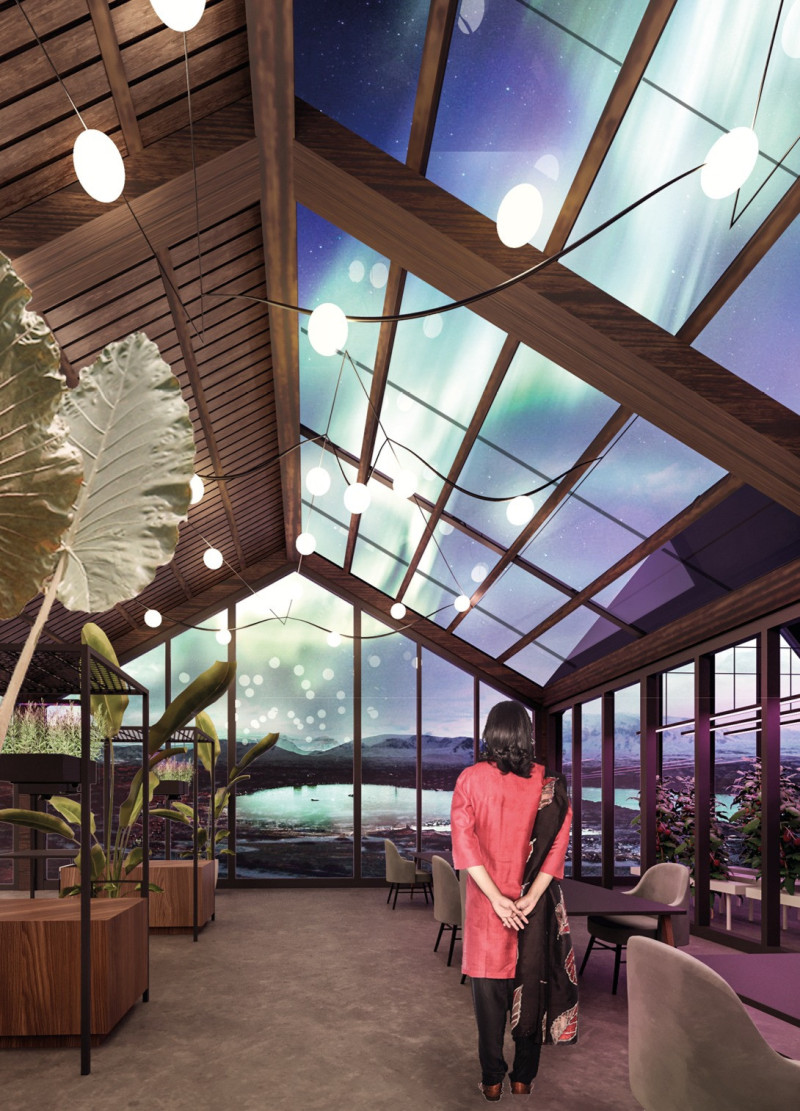5 key facts about this project
The Iceland Greenhouse Restaurant is located near the Myvatn lakes in Iceland, combining dining and food production. This establishment emphasizes sustainability and builds strong connections to the surrounding landscape. The design draws on the local topography, merging organic shapes with elements of traditional Turfs architecture.
Architectural Concept
The design incorporates gentle curves and varying heights, creating a cohesive relationship between the building and its natural environment. A rigid triangular framework serves as a central feature, connecting different elevations and reflecting local building practices. The restaurant is oriented 45 degrees from the North-South axis, enhancing views of the Myvatn lakes while limiting visual clutter from nearby parking areas.
Functional Layout
The layout prioritizes both visitor experience and food production. At the back, three rows of modular greenhouses create a foundational element for the restaurant. This setup allows for phased growth and enables diners to see the growing process firsthand. Spacious dining areas are designed to highlight hydroponic production, providing an engaging connection to the food being served.
Sustainability and Materials
Sustainability stands at the forefront of the design. A closed-cycle fertigation system uses rainwater and local water sources to supply nutrients for plant growth. The primary structure relies on L-shaped steel beams for strength and durability, ensuring it can withstand the local climate. These choices in materials are part of a broader commitment to minimize environmental impact while enhancing food production efficiency.
Agricultural Innovation
Hydroponic systems are a key element of the design, with lettuce grown in multi-layer channels and tomatoes and peppers cultivated in nutrient film technique channels. This approach not only shortens the distance from farm to table but also serves to educate visitors about modern agricultural methods. Integrating these systems within the restaurant emphasizes the establishment’s role as a focal point for local agriculture and community engagement.
Overall, the design culminates in spaces where architecture and nature interact, featuring custom furniture that incorporates aromatic plants. This invites visitors to appreciate the subtleties of fresh produce, enhancing their overall experience.






















































